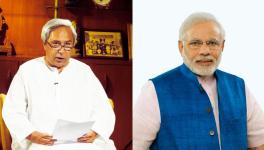History of how Hijab Vanished and Reappeared as Symbol of Dissent
Reprsentational use only.
One late evening in the late 1990s, Harvard University Professor Leila Ahmed and her friend chanced upon a gaggle of women at Cambridge, Massachusetts, all of them wearing the hijab or headscarf. Born and schooled in Cairo in the 1940s, without having to veil, their presence had Ahmed wonder: “Is fundamentalism taking root in the United States?”
This question prompted her to research the unveiling and veiling of the Muslim world for ten years, after which she wrote A Quiet Revolution: The Veil’s Resurgence, From the Middle East to America.
Ahmed’s book shows hijab has multiple meanings, as much a symbol of protest and resistance as compliance and conformity. Compelling women to wear or cast aside their hijab only triggers resentment, a fact Hindutva footsoldiers raging against it should know. A fact also of some relevance to the judiciary.
First the story of unveiling, which reached its apogee in Cairo, veritably the intellectual capital of the Arab world.
The Unveiling
In 1956, historian Albert Hourani wrote a piece, ‘The Vanishing Veil a Challenge to the Older Order’, predicting that the veil was on its way out in the Middle East. He credited the trend of unveiling to Qasim Amin’s book, The Liberation of Women, which had created a furore on its publication in 1899.
Amin believed Egypt had to catch up with Europe. Egypt was backward, he argued, because its women were veiled and confined to home. This made them incapable of socialising their children in the changing world. In reality, though, Amin was articulating ideas already current in Egypt because of its growing contact with Europe, courtesy of the French and British conquests and occupations.
This contact not only exposed Egyptians to technological marvels—trains and trams, for instance—but also to the ideas of equality, democracy and meritocracy. Unveiled European women were not a rare sight in Egypt. The European influence inspired Egyptian women, initially the upper class among them and then those middle class, to unveil. Ahmed cites contemporary accounts to show how rapidly unveiling spread.
For instance, Palestinian Anbara Khalidi, who later became a prominent woman activist, noted in 1910, rather exuberantly, that Egyptian women saw the world through the “unveiled eyes”. In the same year, a woman journalist wondered whether unveiled women had fallen “from the sky”. In 1914 was launched a national newspaper, al-Sufur or Unveiling. Its editor wrote, “Women are not the only ones who are veiled in Egypt… we are a veiled nation.”
The speed of unveiling was truly astonishing, evident from Ahmed’s autobiographical touch: “A good proportion of the women coming of age during these decades (women of my mother’s generation, for example—she was born in 1908—as well as, of course, women of my own generation) never unveiled because, in fact, they had never veiled.”
Unveiling was a metaphor for Egypt’s quest to become a society organised on the principles of democracy, equality and meritocracy. For women, as Ahmed notes, it was an expression of their desire to live and dress the way they wanted.
Opponents of Unveiling
But unveiling also had its opponents. In 1908, Fatima Rashid, wife of the owner of a nationalist newspaper, wrote, “The veil is not a disease that holds us back. Rather it is the cause of our happiness….” In 1914, religious scholars petitioned the government to punish, with imprisonment or a fine, women who did not veil.
They belonged to a school of thought that claimed Egypt could achieve progress not by imitating Europe but by turning to Islam. They believed the Egyptian mind needed to be de-colonised, so to speak, by Islamising Egypt. The most prominent among them was Hassan al-Banna, who founded in 1928 the Muslim Brotherhood, which established a network of schools, medical facilities and factories to mobilise Egyptians for the Islamisation project.
But the regime of King Farouk dissolved the Muslim Brotherhood in 1948, prompting its armed wing to resort to assassinations. After Farouk was deposed, the Brotherhood attempted, in 1954, to kill President Gamal Abdel Nasser. The Brotherhood was hostile to Nasser’s socialist policies, pan-Arab nationalism and refusal to turn Egypt into an Islamic state.
Nasser ordered a crackdown on the Brotherhood. Thousands were packed off to jail. Many fled to Saudi Arabia, which, like the Brotherhood, believed all Muslims must anchor their identity in Islam, not in nationality or ethnicity. Saudi Arabia recruited the Brotherhood’s intellectuals to export Wahhabism, which sought to recover “pure Islam” by rooting out local accretions and ‘foreign’ influences. They had the backing of the United States, Nasser that of the Soviet Union.
A challenge to the dominant trend of unveiling was inevitable. The veil, in fact, had not completely disappeared from Egypt. In the poorer districts adjoining Cairo, women covered themselves with “milaya laff”, a black enveloping wrap worn over clothes covering the head and body. Also worn, predominantly by middle-class conservatives, were the colourful European-style scarves, long enough to cover the head and tied around the chin.
Return of the Veil
A twist in the vanishing veil’s story came when Israel drubbed Egypt in the 1967 war. A wave of despondency swept Egypt, prompting its people to ascribe Egypt’s defeat to Nasser straying away from Islam. This view gained currency also because Nasser, to mollify the people, took to publicly affirming his faith, saying, for instance, this: “Allah was trying to teach Egypt a lesson, to… build up a new society.” Nasser released Muslim Brotherhood activists from prison.
Nasser’s successor, Anwar Sadat, who began to woo the United States, allowed the Brotherhood to restart their Islamic outreach as long as they kept away from politics. He also armed them to suppress the Left on university campuses. The Left was the most vocal critic of Sadat’s turn to capitalism.
Not surprisingly, the hijab first surfaced on university campuses in the early 1970s. It had been restyled—the scarf covered the head, the neck and was tied around the chin, the kind the conservative segment had earlier favoured. But it was no longer colourful and was worn with a “gilbab”, a long, loose robe with wide long sleeves. This was “zia Islami” or legal dress for the Brotherhood.
Although a small percentage of Egyptian students made the sartorial switch, it was still noticeable enough for scholars like Fadwa El Guindi and John Alden Williams to interview those who wore the new hijab. These interviews, which Ahmed cites, invariably mention how the 1967 war awakened them to the futility of imitating the West. Egypt’s gains in the 1973 war with Israel, even though limited, were cited as a vindication of the country’s turn to Islam.
Unveiling was no longer the symbol of hope. Hijab was.
Shock Over Hijab’s Spread
The resurfacing of the hijab prompted journalist Amina al-Said to call it the “shrouds of the dead”. Parents and grandparents expressed their dismay and, occasionally, horror to El Guindi and Williams over the hijab’s comeback.
The debate between hijab-wearing girls and their elders is vividly brought out by Ahmed’s story of Ekram Beshir, a first-year medical student in 1971. The hijab-wearing Beshir stood out among university students whose signature style was the miniskirt.
Beshir’s aunt would often ask her to “stop being silly”; an uncle would worry how she would find a husband “dressed like that”. A professor often commented on her dress. On one particularly hot day, he asked why she wore “that thing” on her dress. “Because I am a Muslim,” Beshir replied. The professor fumed, “I’m Muslim, my wife’s Muslim, they’re [students] Muslim.”
Yet the hijab could not have returned without the Islamists, particularly the Brotherhood, projecting it as the right or Islamic way of dressing and also Islamising the society. Their clout was also derived from their network of schools and hospitals, which the underclasses accessed—and which also softened them to Islamic indoctrination.
By the 1990s, the hijab had become the expected method of dressing. It was also the decade in which Islamists engaged in violence, prompting the government to de-Islamise its education system. Thus, girls between Class I to Class V were proscribed from wearing the hijab, which senior students could wear subject to producing a letter of consent from their guardians.
Schoolgirls were horrified to see their mates disallowed from entering school. Even girls who did not wear the hijab took to sporting it in solidarity. Protests broke out, the media criticised, and parents remonstrated. The government lost several legal suits. But even today, high-end restaurants and resorts do not allow hijab-wearing women, perceived as lower class, against which social media campaigns rail.
Hijab does have a class dimension—and symbolism.
The extremes: Iran and France
On 8 January 1936, Iranian ruler Reza Shah Pahlavi issued the Kash-e-hejab decree, banning the headscarf and chador in public places. The royal order had police forcibly remove these from women sporting them. Many stopped venturing out. Conservative families schooled their children at home. The veil was now to become an integral element of Iran’s politics.
In 1941, the British forced Reza Shah to abdicate in favour of his son Mohammad Reza Shah, who let women decide whether or not to veil. In subsequent decades, a new public culture emerged—social gatherings had fashionable, bareheaded women mingle with those draped in a chador. And yet, as the Shah’s autocratic rule goaded Iranians into taking to the streets, women wore chadors to join them, regardless of whether they were religious. Their chador symbolised Iran’s resentment against the West’s support of the Shah.
After the 1979 revolution swept the Shah out of power and into exile, Ayatollah Ruhollah Khomeini, the Supreme Leader, ruled that women must wear the veil. Thousands of women protested on 8 March—International Women’s Day. The Iranian regime subsequently deployed thousands of undercover agents, or gasht-e-ershaad, to enforce the hijab code. The Justice for Iran, an NGO, reported that 30,000 women were arrested between 1993 and 2003 for improperly wearing their hijab.
Protests against the hijab have continued. In 2006, a movement—One Million Signatures for the Repeal of Discriminatory Laws, aka Change for Equality—was initiated. The government arrested its key organisers, but not before they managed to convene a meeting to explain the goals of the movement. A year later, a survey of the Iranian Center for Strategic Studies, a wing of the presidential office, found that 49% of Iranian women were opposed to the mandatory wearing of the hijab.
In 2017 was launched the White Wednesday campaign, which had men and women wear white clothes and white scarves every Wednesday. Women would remove their headscarves and use sticks to hold them aloft and wave. Or they would simply keep silent. On 27 December, Vida Movahed, a 31-year-old mother, stood atop a utility box, took off her hijab and waved it on a stick. Arrested a few hours later, the photograph of her protest went viral.
Such protests, according to academician Faegheh Shirazi, symbolise “women’s power and the use of civil disobedience to gain their freedom of choice to select what they desire to wear or not to wear”.
The choice to wear has been circumscribed by France in the reverse way. In 2004, France banned students from wearing religious symbols in public schools, although the measure was largely perceived to have been taken to prevent Muslim students from wearing the headscarf. In 2010, France banned the burqa from public places. “The Republic is lived with an uncovered face,” a French government campaign proclaimed.
Last year, the French government passed yet another law to extend the prohibition on civil servants wearing religious symbols to all private contractors of public services. Not only did the Left hit out against President Emanuel Macron for discriminating, under the veneer of secularism, against Muslims, but a vibrant social media campaign also sprang up with the hashtag #HandsOffMyHijab.
Iranian graphic novelist Marjane Satrapi was born and schooled in Iran. Today, she resides in Paris. Satrapi was ten years old when the Islamic revolution swept Iran. Satrapi, in a piece in The Guardian, said she resented being forced into wearing the hijab.
Satrapi, however, added. “I know what it felt like to be pushed into being religious, so I know what it must be like to be pushed into being secular. Let’s not make the mistake that the fanatics made with the Iranian women. It is the same violence.”
Battle of Algiers
The attitude of France to the hijab is entwined with its history of colonialism. In 1958, during the Algerian War of Independence, the French colonial regime held mass public ceremonies to unveil women. This was done to convey that Algerian women supported the French because of its policy to emancipate them. In later years, it was found most women were poor and compelled to unveil.
This had Frantz Fanon, the renowned anti-colonial intellectual, to summarise the French doctrine thus: “If we want to destroy the structure of Algerian society, its capacity for resistance, we must first of all conquer the women; we must go and find them behind the veil where they hide themselves….”
The unveiling programme drove many Algerian women to wear the veil in protest. But it also had women exploit the western stereotype of unveiled women. French guards would wave away, without checking, women who were dressed in chic western attire. Slipping passed checkpoints, they ferried arms and ammunition to the resistance fighters, at times even launching attacks on French troops.
After the French rule collapsed in Algeria in 1962, many Algerian women stopped wearing the veil in urban areas. Yet the memory of hijab as a symbol of protest was invoked by women who took to the streets, in 2019, against President Abdelaziz Bouteflika’s decision to run for a fifth term. They wore the Algerian veil. They were addressed by the iconic Djamila Bouhired, who was awarded the death sentence (subsequently commuted to imprisonment) for allegedly bombing a café during the anti-colonial struggle.
Lessons for India
After the 9/11 attacks on the World Trade Centre, some Muslim women stopped wearing the hijab to evade insults and violence. In those troubled months post-9/11, Leila Ahmed says in her book that the most remarkable action was of non-Muslim women insisting on the right of their Muslim counterparts to choose what they wished to wear. Equally significant was the Washington Post’s Emily Wax reporting in 2002 a perceptible increase among Muslim students donning the hijab on university campuses. They told Wax that “by putting on the hijab, they are showing increased pride, their pride in being Muslims…”.
Citing reports such as Wax’s, Ahmed writes, “There are clear continuities in the meanings that wearers [of hijab] give in quite different societies.” But one theme common to all societies, Ahmed concludes, is the hijab’s capacity to signal resistance or protest against the majority’s views, to make its wearers a visibly dissenting minority affirming their heritage and values—and challenging the inequities and injustices of mainstream society.
Ahmed’s conclusion goes to the nub of the hijab controversy in Karnataka. If women wearing the hijab to class undermine equality, so does Prime Minister Narendra Modi’s participation in the bhoomi pujan of the new Parliament and Ayodhya’s Rama temple. The increasing Hinduisation of public places every passing month is astonishing.
Whether the Popular Front of India is supporting the hijab-protesting women is not the point. The point lies in Ahmed’s conclusion—that the hijab makes its wearers a dissenting minority visible. The point is what novelist Satrapi said—that forcing women to take off or wear the hijab is violence. Period.
The author is an independent journalist. The views are personal.
Get the latest reports & analysis with people's perspective on Protests, movements & deep analytical videos, discussions of the current affairs in your Telegram app. Subscribe to NewsClick's Telegram channel & get Real-Time updates on stories, as they get published on our website.
























